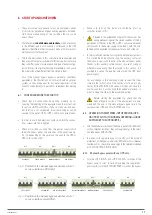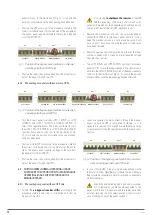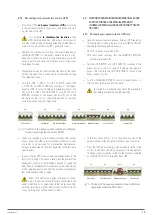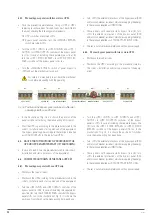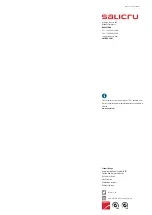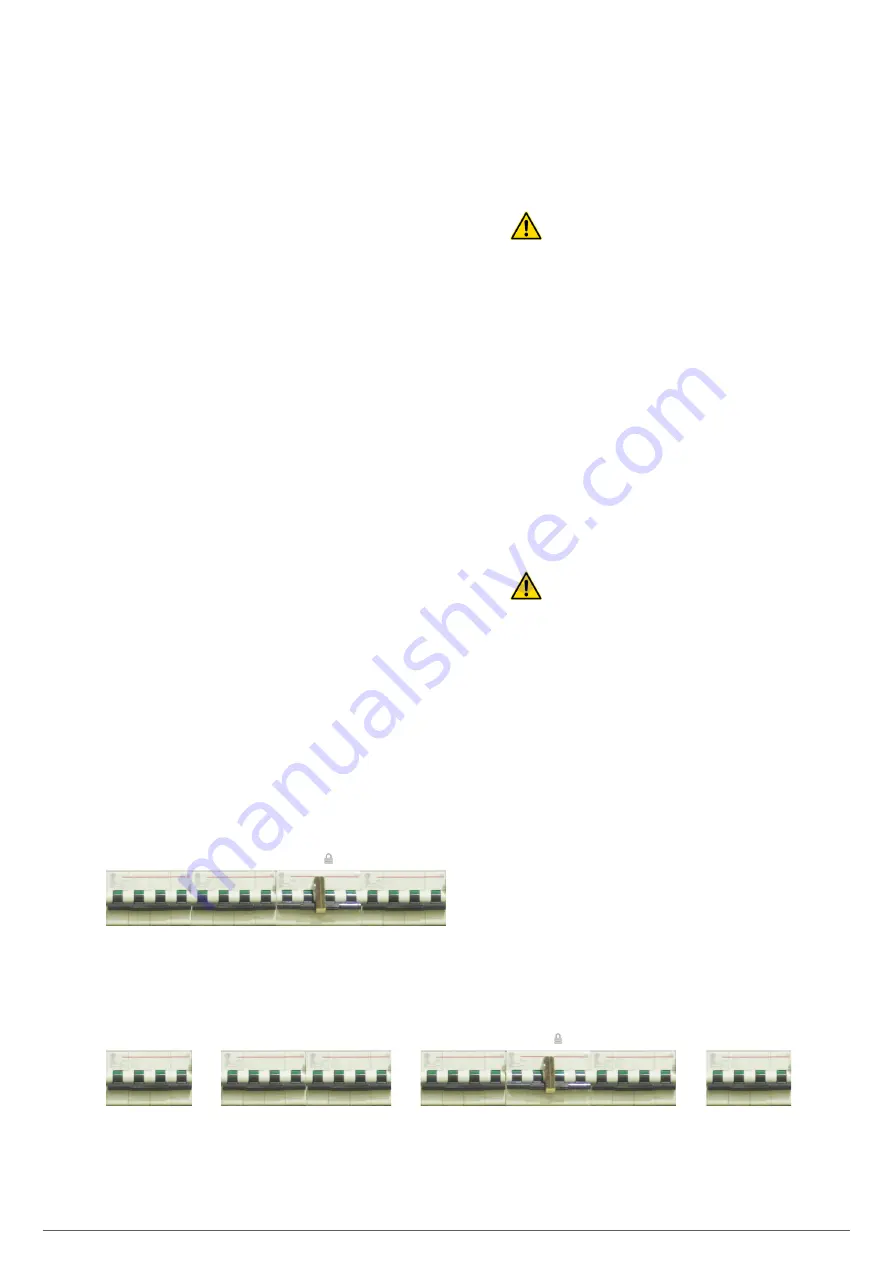
17
6. START UP AND SHUTDOWN.
•
These instructions are generic for any manual bypass panel
of this series, parallel and redundant equipments included.
Omit those manoeuvring of the switches that your unit
doesn’t have.
•
The references
in bold between brackets,
which are shown
in the different points of this section, correspond to the UPS
elements identified in their own user’s manual. For more infor-
mation consult that document.
•
The shown illustrations in this section are mere examples and
they are with four poles switches of DIN rail type, but in practice
they can differ in one or more aspects like: type of panel configu-
ration, format, size or protection type. Nevertheless, in any case
the order will not be different from the stated in them.
Also, in the manual bypass panels in parallel or redundant
equipments, the illustrations do not match with any preset
system, so they are generic for any panel regardless of the
quantity of equipments in parallel or redundant that belong
to.
6.1. CONTROLS BEFORE THE START UP.
•
Check that all connections have done properly, by re-
specting the labelling of the equipment and the instructions
in section «INSTALLATION». If phase or phases and neu-
tral rotation is not respected, important damages can be
caused to the panel, UPS or UPS’s and/or connected loads.
•
In order to avoid bad electrical contacts, check the connec-
tions screws are firmly tighten.
•
Check all switches coming from the power supply which
feeds the bypass panel, the own ones in the panel (see Fig.
9 or 10 depending on the case) and the ones in the UPS or
UPS’s are turned «Off».
UPS INPUT
STATIC BYPASS
MANUAL BYPASS
UPS OUTPUT
Off
Off
Off +
Off
Fig. 9.
Position of the manual bypass switches «Out of
service» (with one UPS only).
UPS 1 INPUT
UPS 1 STATIC BYPASS
MANUAL BYPASS
UPS 1 OUTPUT
Off
Off
Off +
Off
•••
UPS N INPUT
Off
•••
UPS N STATIC BYPASS
Off
UPS N OUTPUT
Off
•••
Fig. 10.
Position of the manual bypass switches «Out of
service» (with several UPS’s).
•
Make sure that all the loads are shutdown (start up
switches turned «Off»).
•
Proceed in the established order of this document. Any
wrong manoeuvring over the stated switches of the by-
pass panel, or the ones in the UPS or UPS’s, can cause a break or
short-circuits in the power supply to the loads, with the unin-
tended and unexpected consequences for any part of the set.
•
In the installation section, for single and parallel equipments,
it is stated the need of connecting the auxiliary contact of
the manual bypass with the one in the manual bypass panel.
Thanks to this auxiliary safety contact, in case of wrong or
different manoeuvring than the stated in this section, it is
avoided to overlap the inverter output with the UPS input
power supply.
For any change in the operating mode, respect the steps
stated in the instructions of this section strictly, and in par-
ticular, for the TWIN PRO 33 series, which do not have this
auxiliary contact, but they have the needed protections, in
order to make the steps in the established order.
Before starting the equipment up, check that the
manual bypass switch of the equipment or equip-
ments and the one in the manual bypass panel are in the
same position (UPS and Off or BYPASS and On).
6.2. OPERATION TO SHIFT FROM
«
OUT OF SERVICE
»
(UPS
OR UPS’S TO
«
OFF
»
) TO
«
NORMAL OPERATING
»
(LOADS
SUPPLIED BY THE UPS OR UPS’S).
•
Turn the external protections of the bypass panel «On» (RCD and/
or circuit breaker switches), they will supply energy to the termi-
nals labelled as «INPUT LINE».
•
In panels with separate bypass line (-B), turn the external
protections of the bypass panel «On» (RCD and/or circuit breaker
switches) «On», they will supply energy to the terminals labelled
as «STATIC BYPASS INPUT LINE».
6.2.1. Manual bypass panel with one UPS only.
•
Turn the «UPS INPUT» and «UPS OUTPUT» switches of the
bypass panel to «On». In case of including the separate by-
pass line (-B), turn the «STATIC BYPASS» switch of the bypass
USER'S MANUAL
Summary of Contents for SLC ADAPT
Page 2: ...2 SALICRU...
Page 21: ...21 USER S MANUAL...















